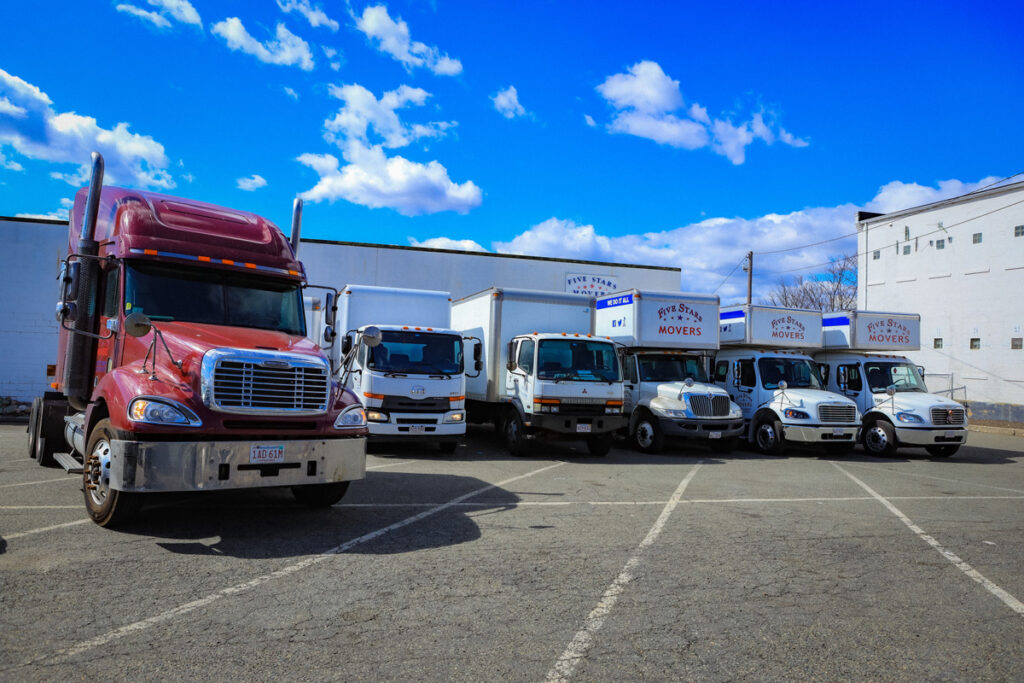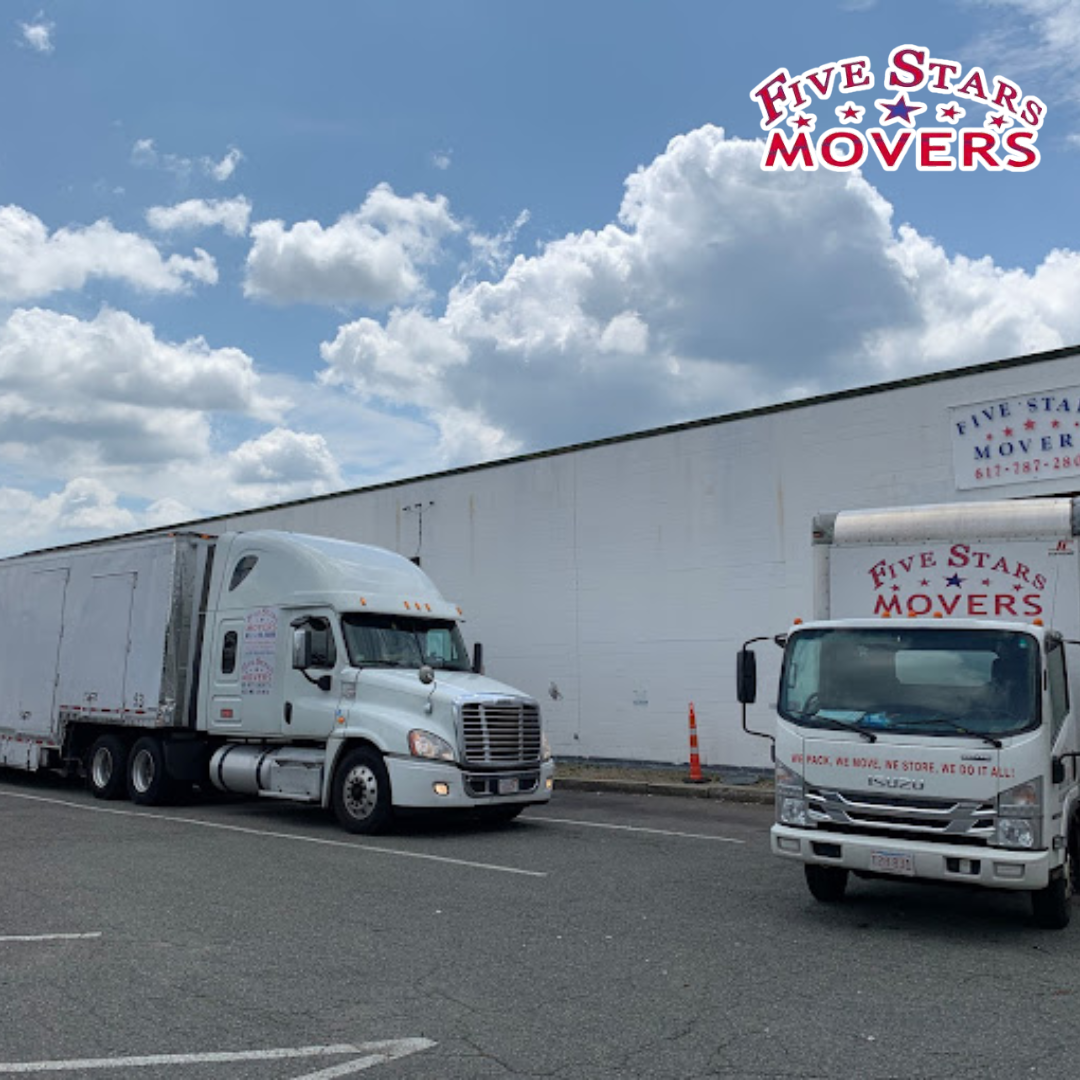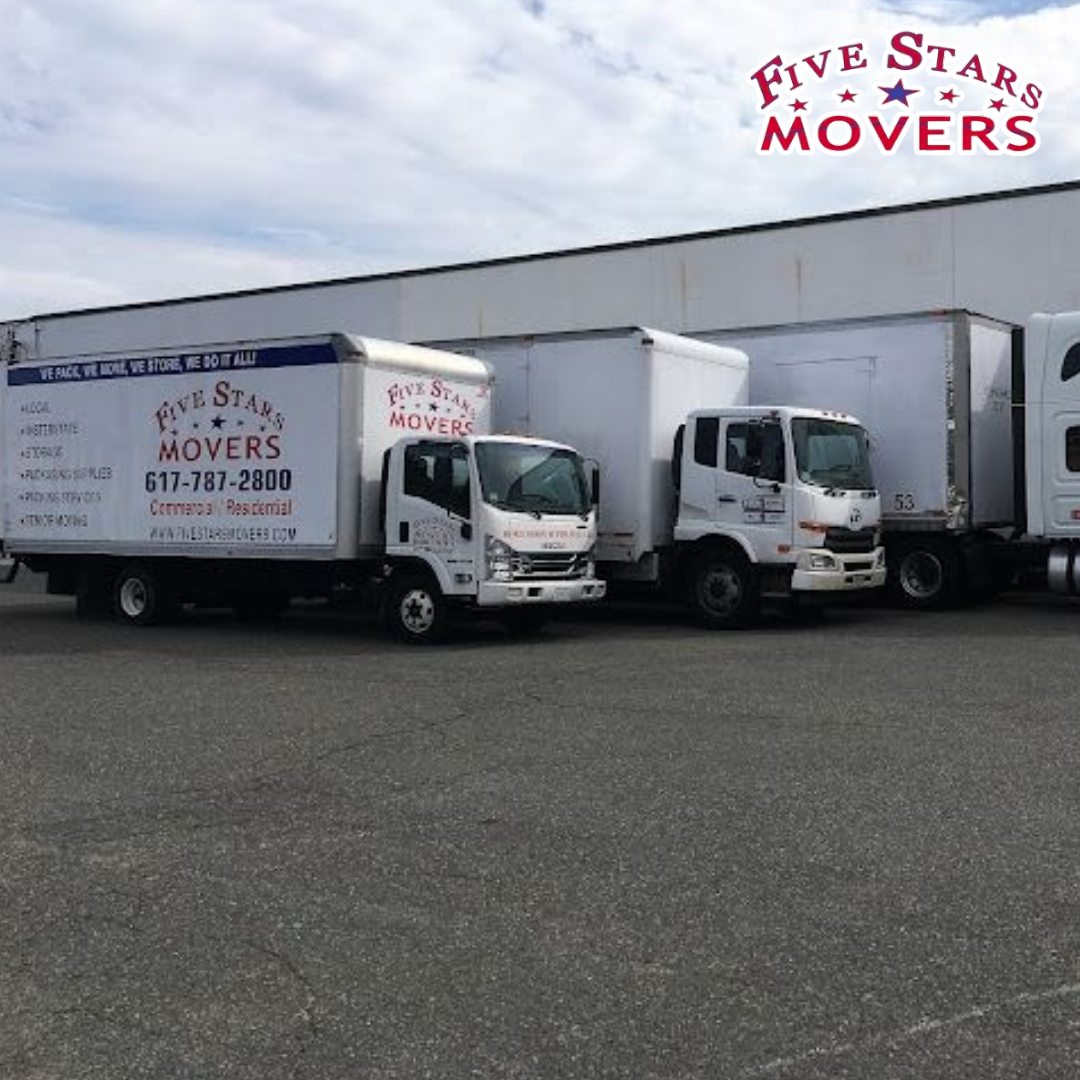Moving Made Easy: Your 12-Week Guide to Planning a Cross-Country Move by Five Stars Movers
Newton, United States - January 9, 2025 / Moving Service Marketing Company /
Moving cross-country can be a daunting and overwhelming experience, filled with countless details to consider and plans to make. From packing up your belongings to coordinating logistics, it’s easy to feel lost and unsure where to start.
At Five Stars Movers, they understand the unique challenges of relocating long distances, whether organizing transportation, finding the right moving supplies, or timing everything perfectly for a stress-free transition. That’s why they have created a comprehensive 12-week timeline to guide you through every step, ensuring your cross-country move is as smooth, efficient, and worry-free as possible. Let them help you turn what seems overwhelming into a manageable and successful journey.
Planning Your Cross-Country Move
When planning a cross-country move, it is essential to start with clear goals and a structured approach. The first thing to establish is a realistic budget. Begin by calculating all potential expenses associated with the move. This means not only considering the professional moving fees or rental truck costs but also factoring in packing supplies, travel costs, lodging during transit, and even unexpected emergencies. Setting aside 10-15% of your budget as a safety net for unforeseen expenses is wise.
When budgeting, consider how moving might affect your long-term finances. Many people forget about extra costs like higher utility bills or changes in property taxes at their new location. Knowing these factors can help you plan better. Try using online budgeting tools or apps to track your expenses easily.
Once your finances are sorted, the next step is to create an inventory list.
Inventory List
Creating an inventory list isn’t just about staying organized—it’s a way to avoid the stress of a big move. List everything you own, like furniture, appliances, and personal items. You can go old school with pen and paper or use tools like spreadsheets or moving apps to make the process easier.
Studies show that people who create an inventory list are less likely to lose or damage items during a move. This is especially helpful if you’re using professional movers, as it gives you a clear record of what’s being loaded and transported.
An accurate inventory also makes unpacking much easier. You’ll be able to quickly find the essentials without digging through every box.
You’re setting yourself up for a smooth move by managing your budget and inventory. Next, look at a step-by-step timeline to help you stay on track as moving day approaches.
12-Week Moving Timeline
Planning your move with a 12-week timeline makes it easier to manage and reduces stress by handling tasks step by step. This approach helps you stay organized and fully prepare for moving day.
Week 1-4: Initial Preparation
- Create a dedicated moving folder to store all receipts, contracts, and checklists. This simple step saves time and keeps information organized in one place.
- Notify your current landlord about your upcoming move if you're renting to comply with lease requirements.
- Research several moving companies, collect quotes and read reviews to find reputable professionals who fit your needs. This groundwork will pay off when it comes time to book services.
- Start decluttering by sorting your items into three categories: keep, donate, or discard. This will help simplify the process and bring clarity as you move forward.
As the first four weeks end, you'll have built strong foundations that will prepare you for the next phase of your planning.
Week 5-8: Making Arrangements
Now that you've completed the initial preparations, it's time to take action on logistical arrangements crucial for a successful move.
Step 1: Select a moving company and book their services promptly based on your research. Popular movers can fill their schedules quickly during peak seasons.
Step 2: Confirm your moving date with the movers and yourself so everyone is aligned.
Step 3: Notify utility companies well before your moving date to ensure smooth service transitions. This means turning off utilities at your old home while activating them at your new residence.
Step 4: If necessary, arrange for temporary accommodations or storage units. Having a place to stay or space for belongings during the transition can alleviate stress on moving day.
With all the arrangements, you're ready to focus on the practical aspects of packing up your life.
Week 9-12: Finalizing and Packing
The last leg of your timeline is where things start to come together. During these weeks, packing becomes the priority as you prepare for the big move:
Start with non-essential items, such as seasonal clothing or decorative pieces, which you'll not need immediately but should be packed carefully. Be sure to label boxes clearly; this will greatly help during unpacking.
Additionally, create a travel plan for your long-distance journey. Booking hotels or finding pet-friendly accommodations is vital if traveling with family members or pets.
Pack an essentials box. This box should include all crucial items you'll need for the first night in your new home—things like toiletries, pajamas, and basic kitchenware—so you won't have to rummage through packed boxes upon arrival.
By following these structured weeks leading up to your move, you set the stage for a seamless transition into packing and organizing seamlessly.
Packing and Organizing Tips
One of the biggest challenges of moving is packing your belongings efficiently and staying organized. No one wants to deal with broken dishes or lost items when unpacking in their new home. To avoid this, having a solid plan before moving day is important.
Decluttering Before Packing
Begin by decluttering your home using what I like to call the "Four-Box Method." Label four boxes as 'Keep,' 'Donate,' 'Sell,' and 'Trash.' This practical technique allows you to evaluate the items you own critically, so every object earns its right to travel with you.
Sorting through your belongings can help you find items you may have forgotten about—like that stack of old electronics gathering dust. Donating clothes or selling furniture in a garage sale can also help lighten your load and even give you extra cash for the move.
Many recommend reducing your belongings by at least 30% during this process. Letting go of items you no longer need makes moving day easier and sets you up for a fresh start in your new space.
Quality Packing Supplies
After sorting through your belongings, it’s time to gather quality packing supplies. Double-walled boxes are a smart investment to keep your items safe during the move. These sturdy boxes will protect your keepsakes far better than flimsy ones that might collapse under weight.
Heavy-duty packing tape is also worth the extra cost, as it will secure your boxes more effectively than standard tape. Don’t forget bubble wrap—wrap any fragile items individually to keep them safe during transit.
Be sure to stock up on markers, too. Labeling each box with its contents will make unpacking much easier when you arrive at your new home.
Finally, as you organize your supplies and belongings, don’t forget to plan how everything will get from point A to point B. Taking the time to explore your options for assistance can make the entire process much smoother.
Choosing the Right Moving Services
Moving can feel overwhelming, but choosing the right service can make all the difference. You generally have two main options: full-service movers or a DIY approach, each with its own pros and cons.
Full-Service Movers vs. DIY
Choosing full-service movers means saying goodbye to the stress of packing, loading, and transporting your belongings. These professionals precisely manage each detail—so you can focus on other aspects of your move without feeling drained. However, their convenience comes at a higher price point, an important factor to consider if you're sticking to a budget.
On the other hand, going the DIY route grants you more control over the moving process. You dictate the timeline and decide which belongings to pack (or leave behind). While this option provides opportunities for saving money, it requires considerable labor and time. Everyone's situation is different: those who value time may choose the full-service option, while others willing to put in the effort might thrive with DIY.
Understanding this balance between convenience and cost will help you decide which path to choose.
Selecting a Moving Company
Now that you've weighed your options, another critical step awaits: selecting a moving company that aligns with your needs.
The first step involves researching and comparing at least three moving companies. This initial investigation allows you to identify potential candidates based on services offered, pricing structures, and customer reviews. Next, verify their credentials—ensure each company is licensed and insured through resources like the Federal Motor Carrier Safety Administration (FMCSA). This verification solidifies your peace of mind, knowing you're entrusting your belongings to legitimate professionals.
Once you've narrowed your choices, dive deeper into consumer feedback by reading Yelp or Google Reviews reviews. Asking for recommendations from friends or trusted online forums can provide firsthand accounts of what to expect from various movers, helping you avoid potential headaches later.
Once you've chosen the right services and secured a reliable mover, organizing the logistics of your move will make your transition to the next chapter much smoother.
Transportation Plans and Logistics
Efficient transportation planning is key to a successful move. It means figuring out how to get from Point A to Point B while ensuring all your belongings arrive safely. This is especially important for cross-country moves, where distances can span thousands of miles. Transporting your possessions is all about coordination—everything must arrive on time and in good condition. A common question is whether to drive or ship your vehicle, as both options come with their own pros and cons.
Driving vs. Shipping Vehicles
Remember that driving gives you more control when choosing between driving or shipping your vehicle. You can take breaks, avoid damage, and even enjoy a road trip. However, it can be tiring and time-consuming, as long hours of driving can quickly wear you out.
On the other hand, shipping your vehicle can save time. However, it comes with costs, especially for long distances or multiple vehicles. When choosing between driving and shipping, think about your budget, schedule, and whether you're ready to handle the fatigue of long drives.
Having set your transportation plan in motion, it's time to focus on smoothly transitioning into your new home and establishing a sense of belonging.
Arriving and Settling In
The first few days in a new home are critical for setting the tone for this new journey. It can feel overwhelming, but by breaking down simple yet effective tasks, you can create a welcoming environment that quickly feels like home.
Immediate Tasks
- Inspecting the new house is the first order of business. Look for any signs of damage or maintenance issues; this is your opportunity to document anything that needs attention.
- Prioritize unpacking essential items. Think about what you need immediately—items like toiletries, a change of clothes, and basic kitchen supplies will make your living space functional from day one.
- Setting up utilities such as electricity, gas, and internet needs to happen as soon as you arrive because these comforts heavily influence your everyday life.
Having these essentials ready allows you to focus on other exciting aspects of settling in rather than feeling unsettled by a lack of basic amenities.
Making Your House a Home
Moving into a new home is more than unpacking and organizing your belongings. It's about creating a space that feels comfortable and personalized to you.
- Don't rush into buying new furniture or decor. Take the time to live in the space, understand its layout, and determine its needs. This will help you make informed decisions when selecting items that suit your style and fit within your budget.
- To make this new space more familiar, add personal touches like photos, plants, or souvenirs from previous homes.
- Explore your new neighborhood—find local restaurants, shops, parks, and other amenities that will make this place feel like home.
By taking these steps, you can easily settle into your new home and community, making the moving process a successful and exciting start to this new chapter in your life.
Cross-country moves may seem daunting, but they can be a smooth and rewarding experience with the right planning and mindset. Consider your options, choose a reputable moving company, plan your transportation logistics carefully, and make your new house feel like home. With these tips in mind, you'll be ready to start this new chapter of your life with confidence and excitement. Contact Five Stars Movers for a stress-free long-distance moving experience. They offer professional and reliable moving services to help you transition into your new home seamlessly.

Contact Information:
Five Stars Movers
89 Adams St, Newton, MA 02458
Newton, MA 02458
United States
Tony Escobar
(617) 820-5186
https://fivestarsmovers.com/
Original Source: https://fivestarsmovers.com/media-room/



